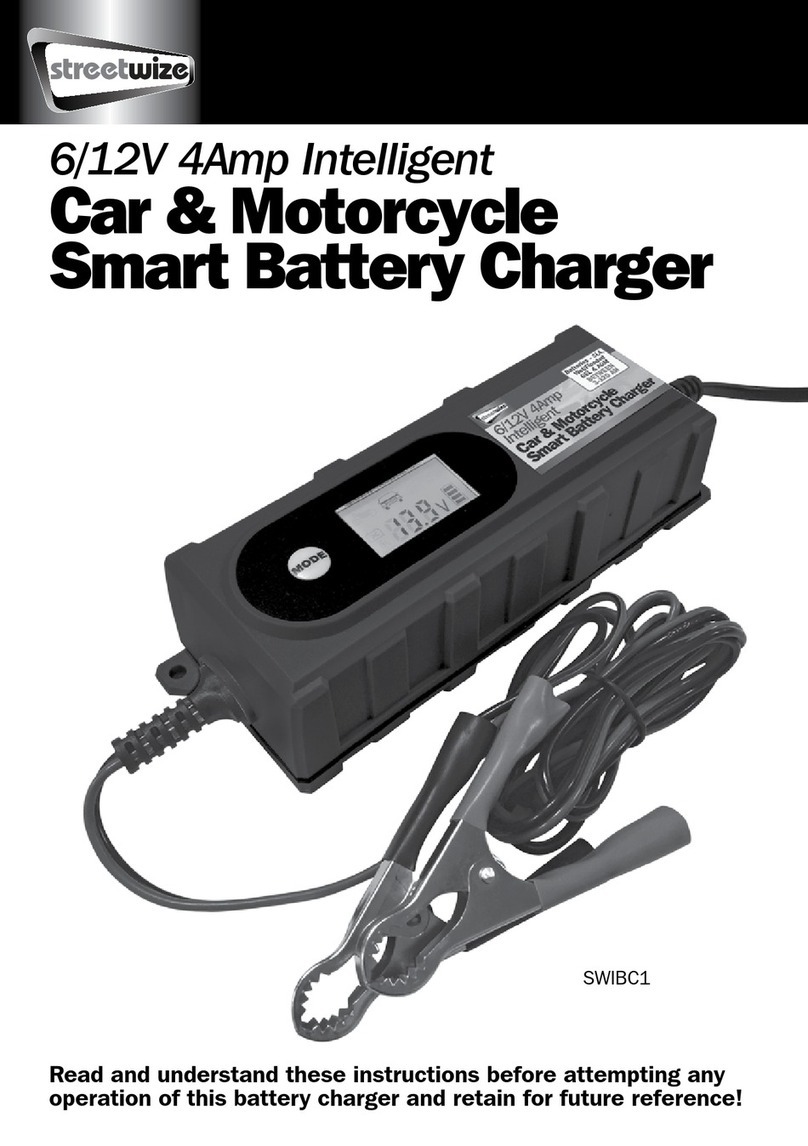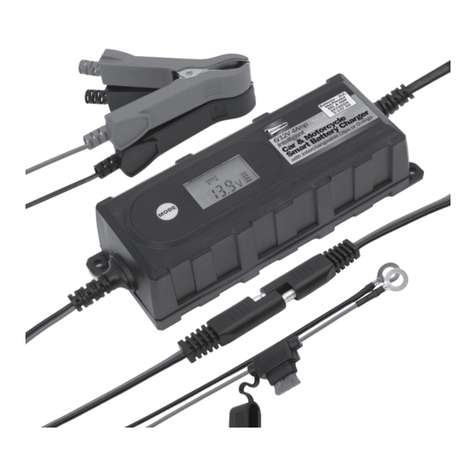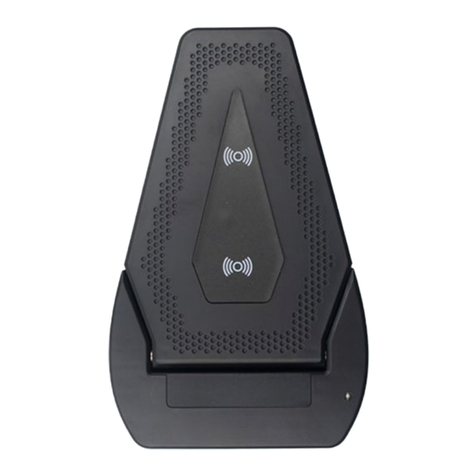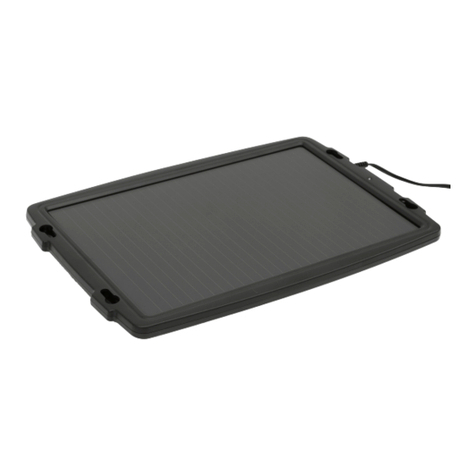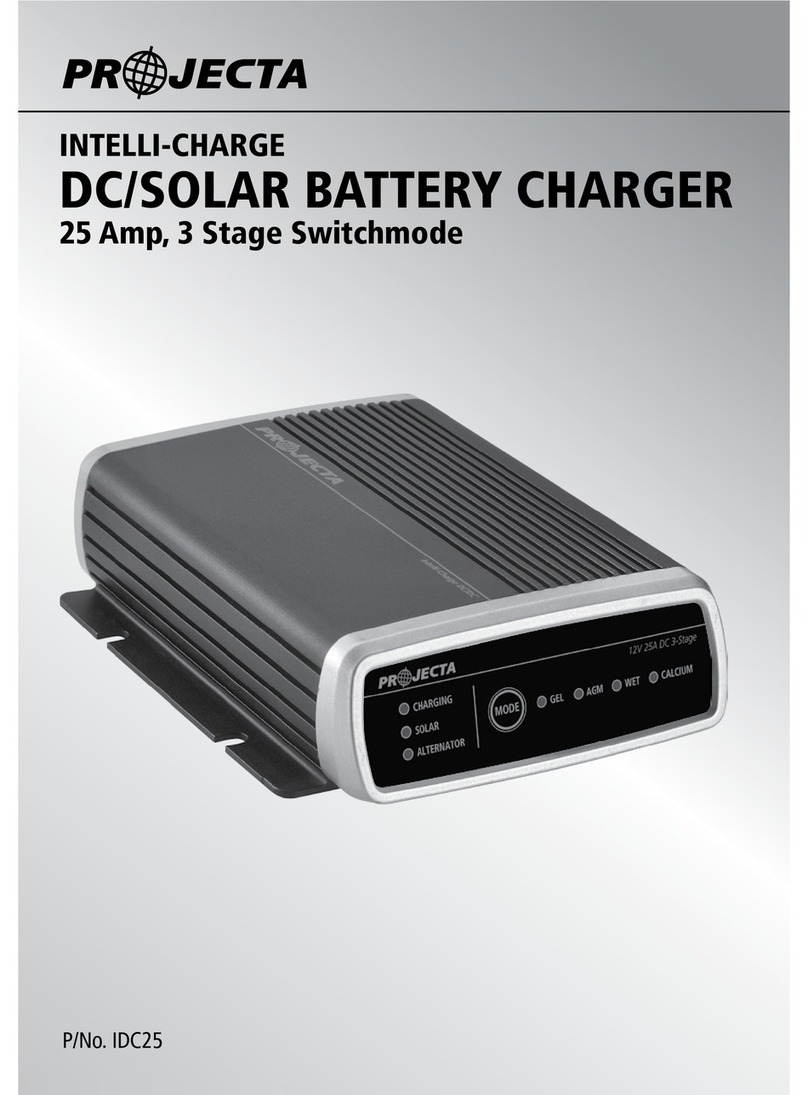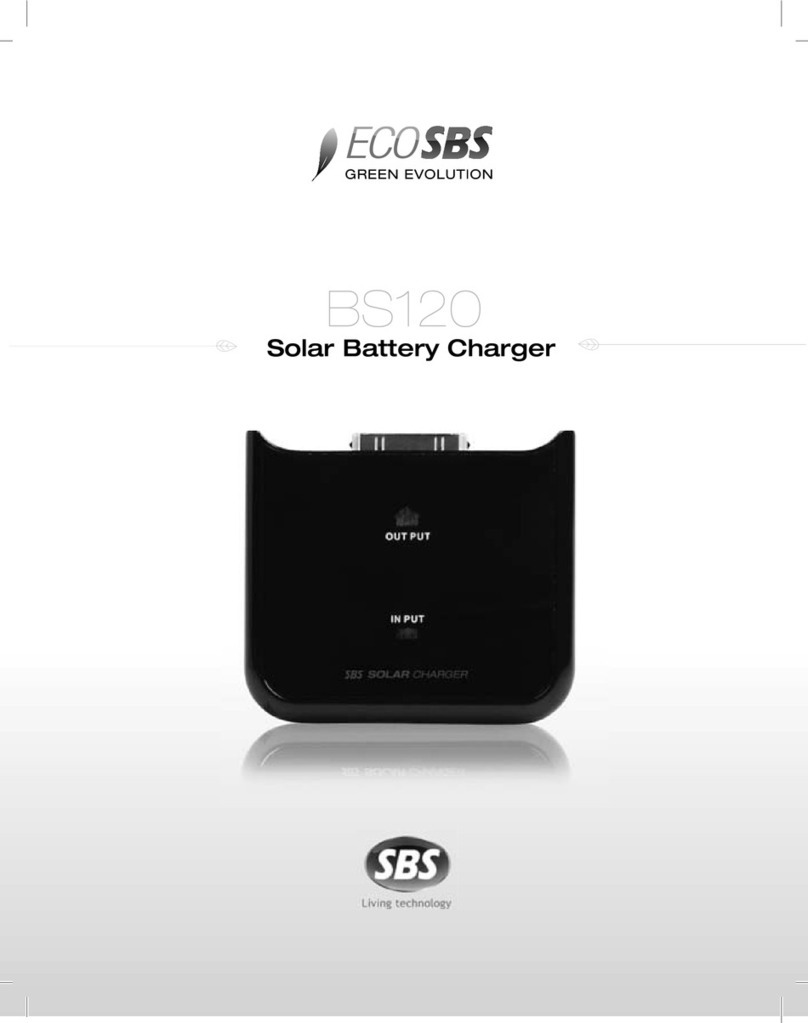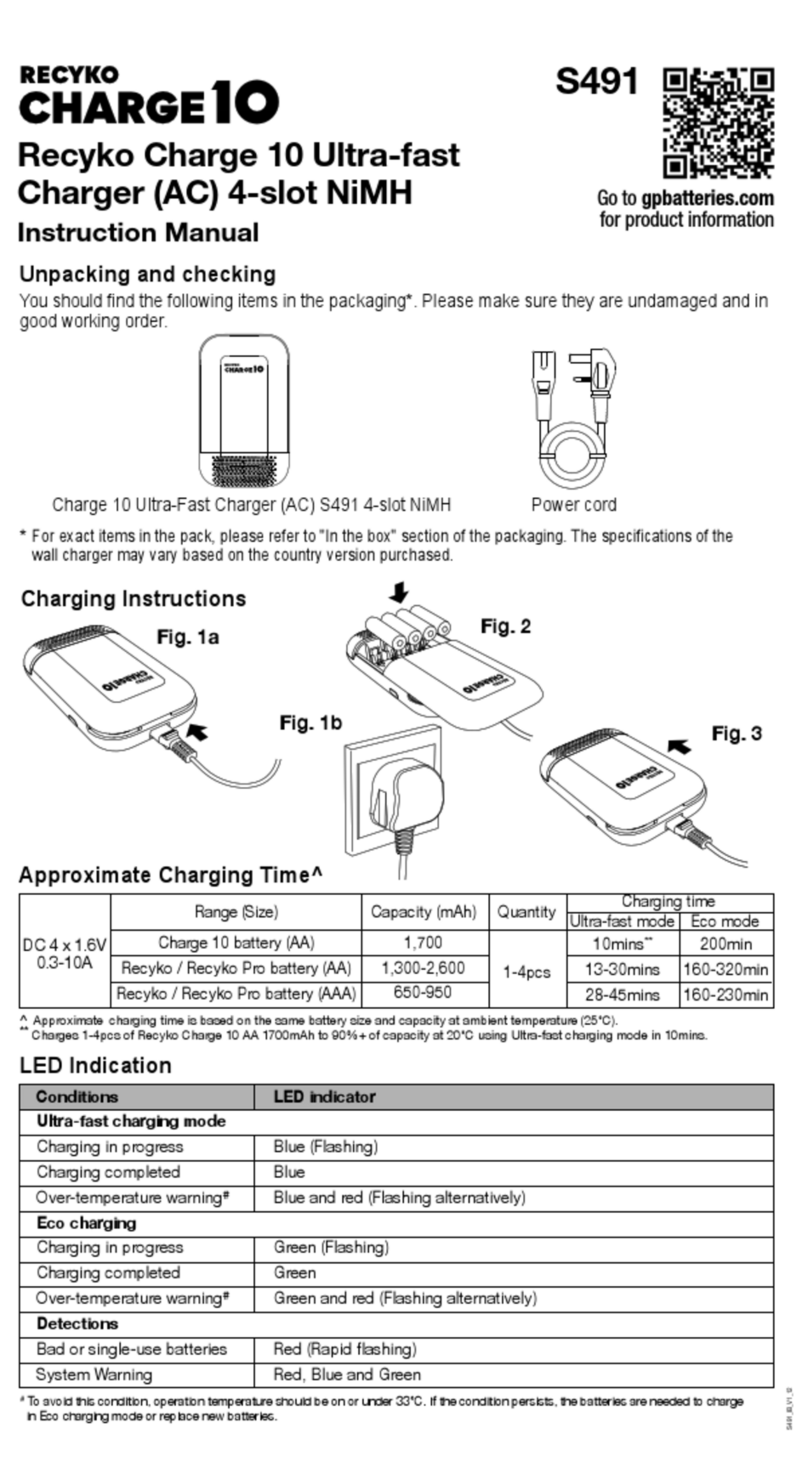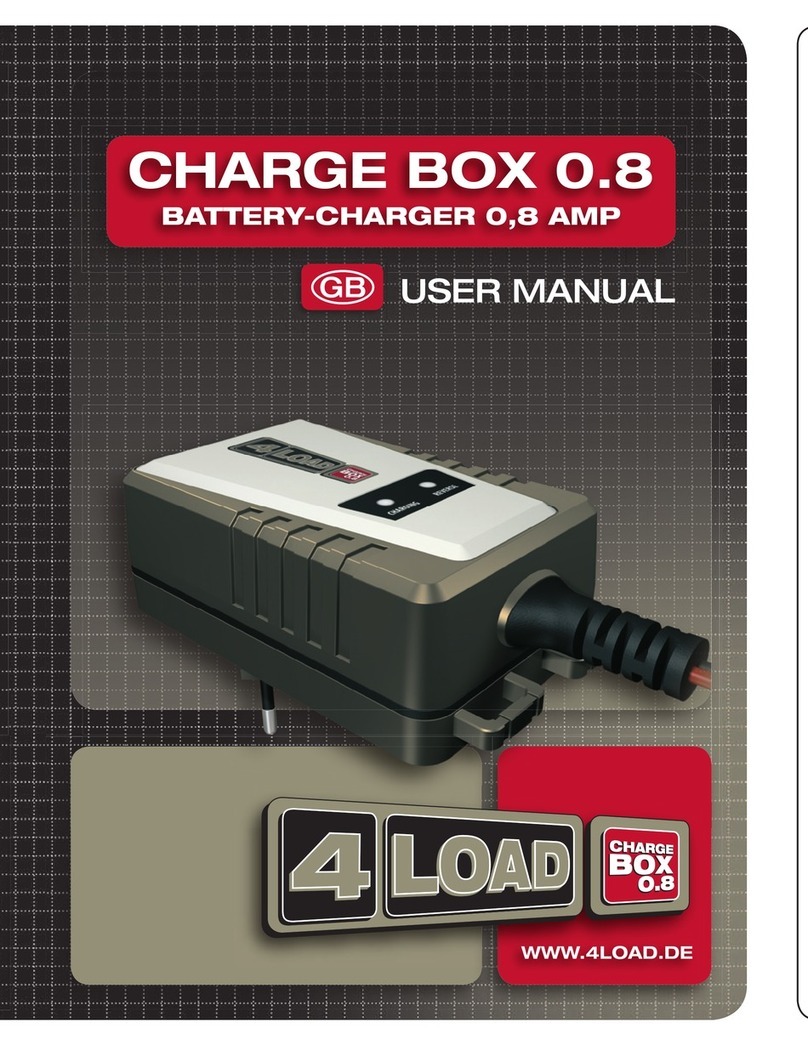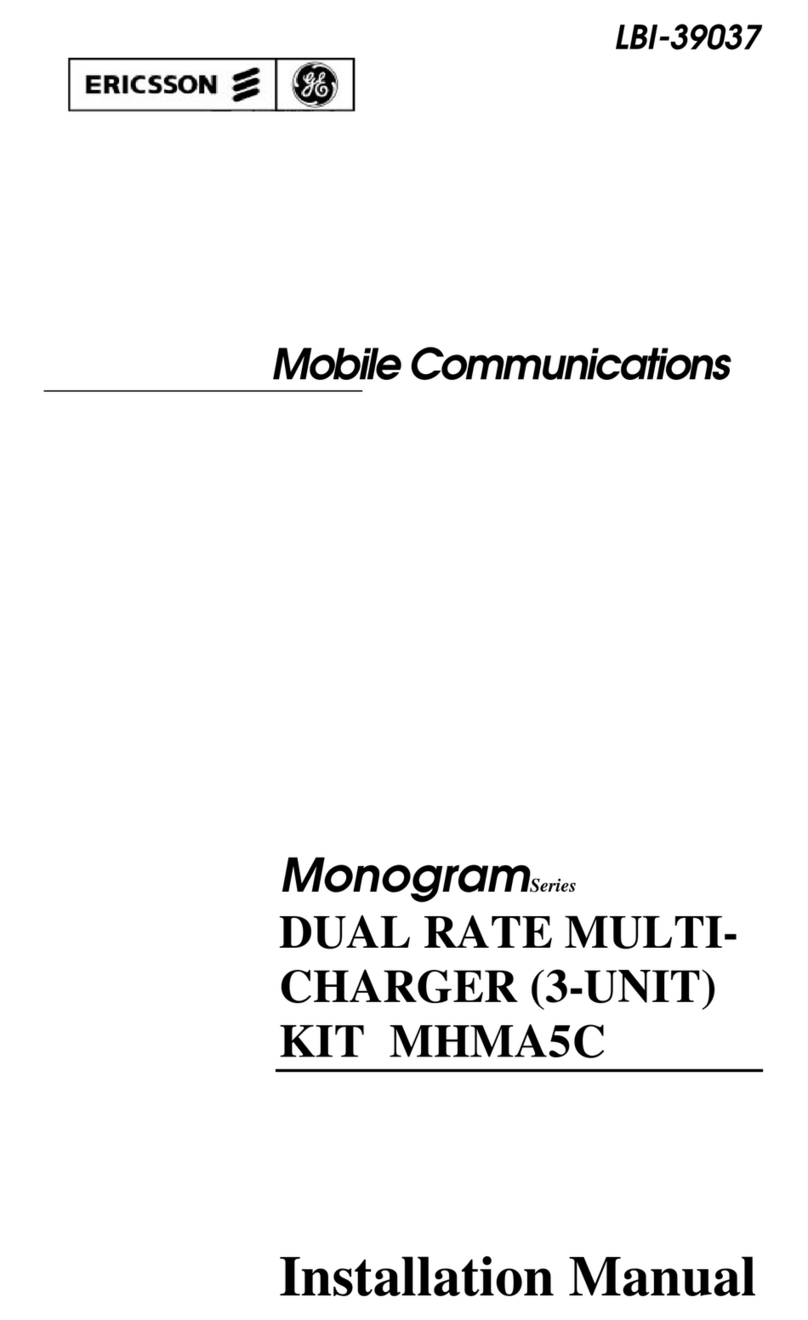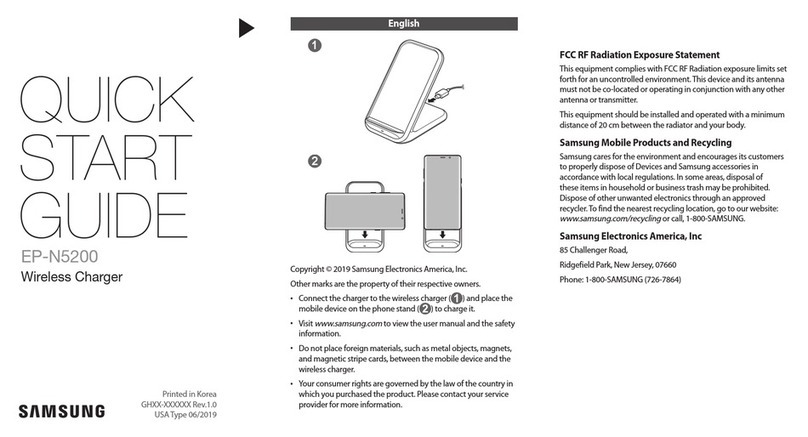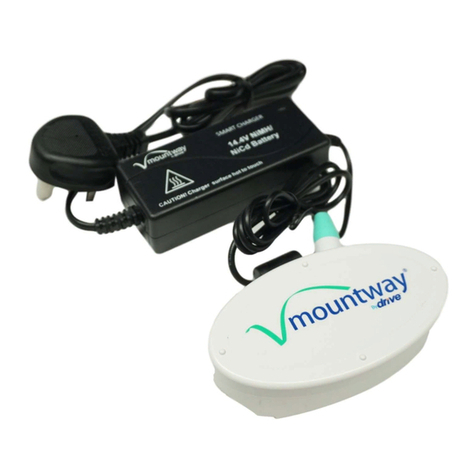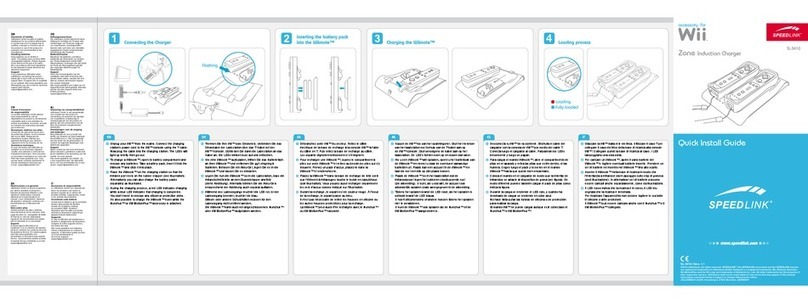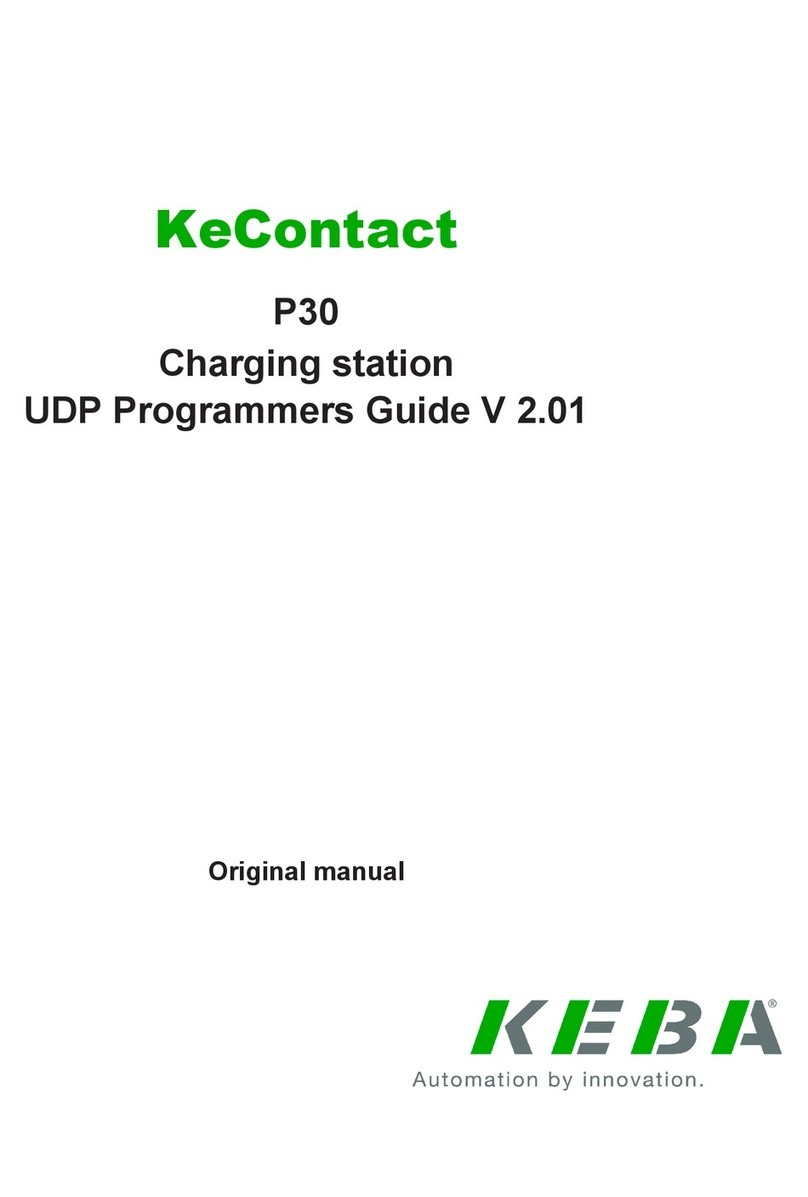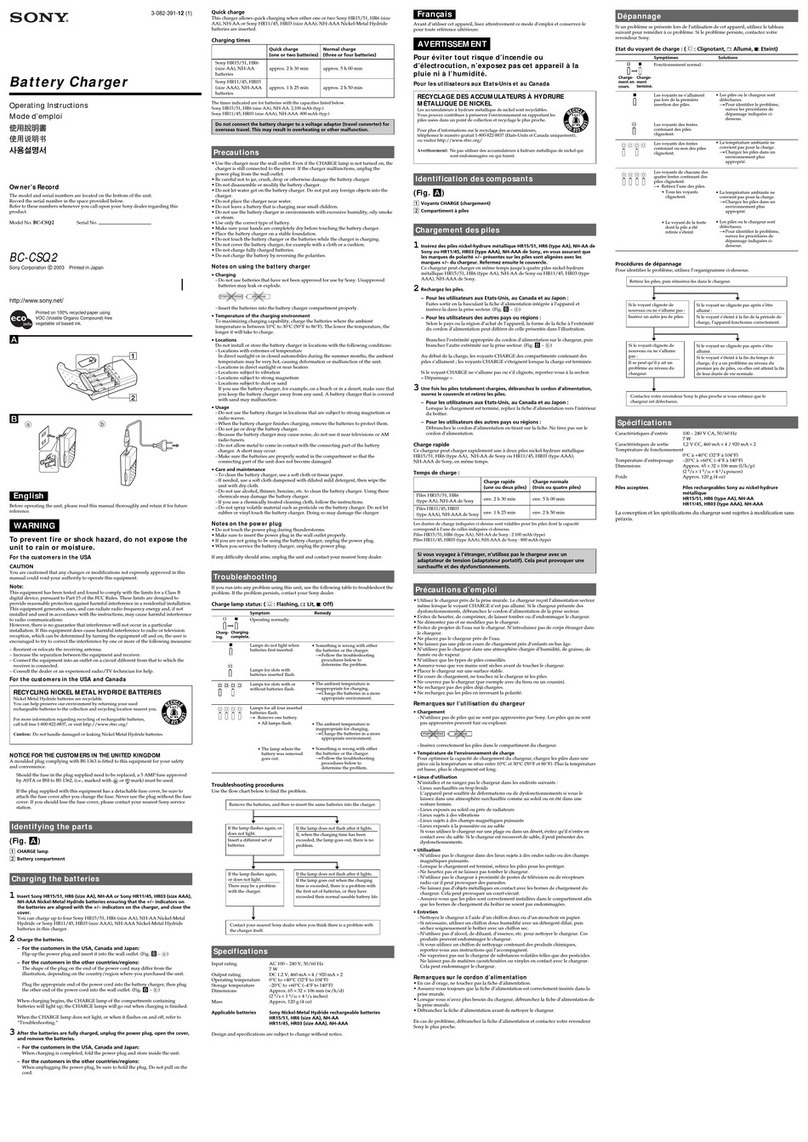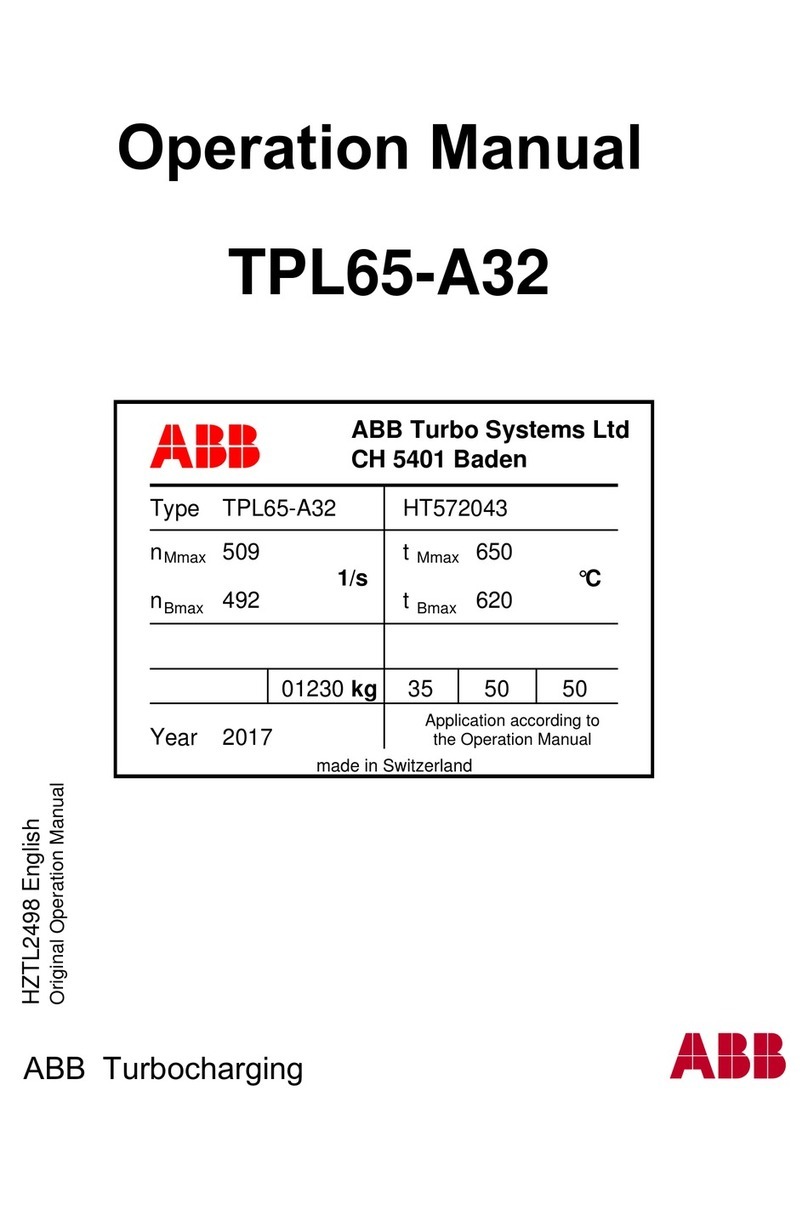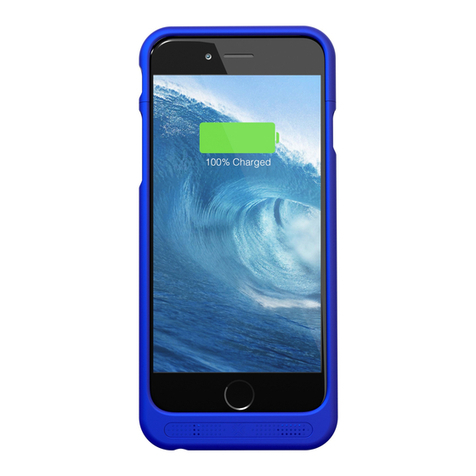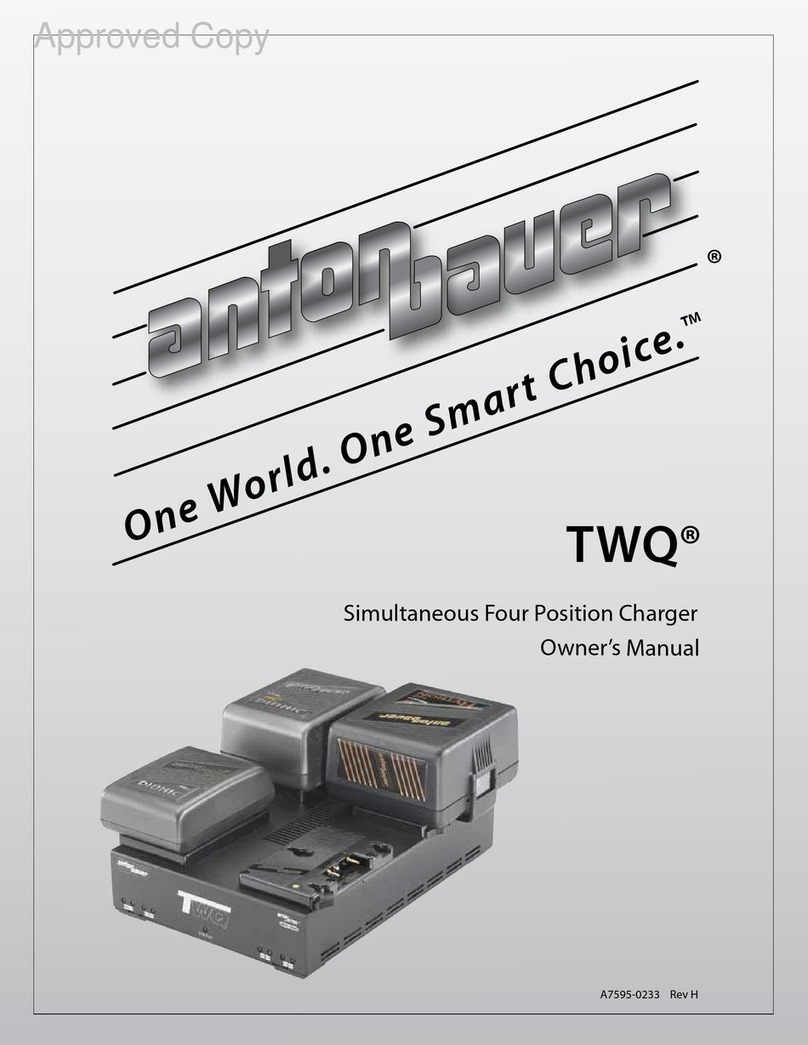STREET WISE SWIBC3 User manual

Read and understand these instructions before attempting any
operation of this battery charger and retain for future reference!
6/12V 10Amp Intelligent
Car & Motorcycle
Smart Battery Charger
SWIBC3

Fig 2 A B C D
E
F G H
Fig 1
1
2
3
4
6
5

INDEX
1. Safety regulations
2. Item layout & contents
3. Operating instructions
4. Maintenance and battery care
5. Cleaning
6. Troubleshooting
7. Disposal and recycling
8. Technical data
Danger!
When using the equipment, a few safety
precautions must be observed to avoid injuries
and damage. Please read the complete
operating instructions and safety regulations
with due care. Keep this manual in a safe
place, so that the information is available at all
times. If you give the equipment to any other
person, hand over these operating instructions
and safety regulations as well.
We cannot accept any liability for damage or
accidents which arise due to a failure to follow
these instructions and the safety instructions.
1. Safety regulations
The corresponding safety information can be
found in the enclosed booklet.
Danger!
Read all safety regulations and
instructions. Any errors made in following the
safety regulations and instructions may result
in an electric shock, fire and/or serious injury.
Keep all safety regulations and
instructions in a safe place for future use.
Waste disposal
Batteries: Only dispose of these items through
motor vehicle workshops, special collection
points or special waste collection points.
Ask your local council.
Explanation of the warning signs on the
equipment.
1. Indoor Use.
2. CE approved.
3. UKCA approved.
4. WEEE recycling (see page 7).
5. Ingress Protection - Minimal protection from
water, suitable for indoor use only.
6. TUV approved.
7. The equipment is double insulated.
M17 1RY
IP20
M17 1RY
IP20
M17 1RY
IP20
M17 1RY
IP20
14
2 3
5 6 7
Suggested battery charging times
Please Note: All charging times are approximate and will depend on the condition of the battery being charged.

2. Item Layout & Contents
(Fig 1)
1. MODE Button
2. LCD display
3. Charging cable, Black (–)
4. Charging cable, Red (+)
5. Carrying handle
5. Securing feet (x4 - if required)
Pack Contents
Open the packaging and take out the
equipment with care. Remove the packaging
material and any packaging and/or
transportation braces (if available).
Check to see if all items are supplied.
Inspect the equipment and accessories for
transport damage. If possible, please keep
the packaging until the end of the
warranty period.
Danger!
The equipment and packaging material
are not toys. Do not let children play with
plastic bags, foils or small parts. There is a
danger of swallowing or suffocating!
3. Operating Instructions
Before using the equipment.
Please also refer to the instructions in the
vehicle owner’s manuals for the car, radio,
navigation systems, etc.
The charger is designed for charging non-
maintenance free or maintenance free 6/12V
starter batteries (lead acid batteries) and for
Lead GEL/ AGM batteries which are used in
motor vehicles.
The equipment is to be used only for its
prescribed purpose. Any other use is deemed
to be a case of misuse. The user/operator
and not the manufacturer will be liable for any
damage or injuries of any kind caused as a
result of this. Please note that our equipment
has not been designed for use in commercial,
trade or industrial applications. Our warranty
will be voided if the machine is used in
commercial, trade or industrial businesses or
for equivalent purposes.
Notes on automatic charging
The charger is a microprocessor controlled
automatic charger, i.e. it is suitable in
particular for charging maintenance-free
batteries and for the long-term charging and
maintenance-charging of batteries which
are not in constant use, e.g. for classic cars,
recreational vehicles, lawn tractors and the
like. The integrated microprocessor enables
charging in several steps. The final charging
step, maintenance charging, maintains the
battery capacity at 95–100% and therefore
keeps the battery fully charged at all times.
The charging operation does not need to be
monitored. However, do not leave the battery
unattended if you charge it over an extended
period of time, so that you can disconnect it
from the mains power supply in the event of
a fault in the charger.
Explanation of the symbols in the LCD
display (Fig. 2)
A - Charging of a 12V battery (lead acid
battery, AGM battery and GEL battery) with
2A charging current.
B - Charging of a 12V battery (lead acid
battery, AGM battery and GEL battery) with
4A charging current.
C - Charging of a 12V battery (lead acid
battery, AGM battery and GEL battery)
in winter mode with 4A charging current
and an ambient temperature of – 20°C to
+5°C. Danger!
Do not charge any frozen batteries.
D - Charging of a 6V battery (lead acid battery,
AGM battery and GEL battery) with 2A
charging current.
E - Defective battery
F - Clamps are wrongly connected (reverse
polarity) or there is a short-circuit
G - Battery voltage display in volts
H - Charge status of the battery in percent (1
increment = 25%) and charging procedure
(increment in the battery symbol flashes =
battery charging in progress; all increments
are lit = battery is fully charged).

Charging settings
Press the Mode button (Fig. 1/No. 1)
to set the charging functions
12V/2A (Fig. 2/Item A),
12V/4A (Fig. 2/Item B)
12 V/4A Winter Mode (Fig. 2/Item C)
(see section above).
Charging the battery:
Release or remove the battery stoppers (if
fitted) from the battery. Check the acid level
in the battery. If necessary, top up the battery
with distilled water (if possible). Important.
Battery acid is aggressive. Rinse off any acid
splashes thoroughly with lots of water and seek
medical advice if necessary. First connect the
red charging cable (+) to the positive pole of
the battery. Then connect the black charging
cable (–) to the bodywork of the vehicle away
from the battery and the petrol pipe.
Warning! Under normal circumstances the
negative battery pole is connected to the
bodywork and you proceed. In exceptional
cases it is possible that the positive battery
pole is connected to the bodywork (positive
earthing). In this case connect the black
charging cable to the negative pole on the
battery. Then connect the red charging cable
at a point away from the battery and the petrol
pipe. After the battery has been connected to
the charger, you can connect the charger to a
socket supplying 230V~50 Hz. The equipment
automatically recognizes the rated voltage (6V
or 12 V) of the connected battery. The LCD
display lights up green. Do not connect it to a
socket that supplies any other mains voltage.
Important! Charging may create dangerous
explosive gas and therefore you should avoid
spark formation and naked flames whilst the
battery is charging. There is a risk of explosion!
If the battery terminals are connected in
reverse, the reverse polarity protection ensures
that the battery and the charger do not get
damaged. If this is the case, remove the
charger from the battery and from the socket
outlet. Start charging again after waiting for
approx. 3 minutes.
Calculating the charging time (Fig. 3)
The charging time depends on the charge
status of the battery. If the battery is fully
discharged, the approximate charging up time
to approx. 80% charge, can be calculated
using the following formula:
Charging time/h = Battery capacity in Ah
Amp. (charging current)
The charging current should be 1/10 to 1/6of
the battery capacity.
Note! Gases are released during the charging
process. It is essential that you ventilate the
rooms well.
When the equipment is in charging mode, the
LCD display is illuminated GREEN.
When charging is complete, the LCD display is
illuminated BLUE.
Finishing charging the battery
lPull the plug out of the socket.
lFirst disconnect the black charging cable (–)
from the bodywork.
lThen release the red charging cable (+)
from the positive pole on the battery.
lImportant! In case of positive earthing, first
disconnect the red charging cable from the
bodywork and then the black charging cable
from the battery.
lScrew or push the battery stoppers back into
position (if there are any).
Battery tester for 12V batteries
Connect the charger to the battery. The LCD
symbol “H” (Fig. 2) shows the charge status
(1 increment = 25%). The battery voltage is
shown on the LCD display “G”.
Overload cut-out
The charger is equipped with electronic
protection against overload, short circuit
and reverse polarity. One or more fuses are
also fitted. If a fuse suffers a burnout it must
be replaced by a new fuse with the same
amp value. If necessary, please contact our

customer support center.
4. Maintenance and
battery care
lEnsure that your battery is always fitted
securely.
lA perfect connection to the cable network
of the electrical system must be ensured
at all times.
lKeep the battery clean and dry. Apply a
thin coating of grease to the connection
terminals using an acid-free, acid-resistant
grease (Vaseline).
lCheck the level of the acid in batteries
that are not maintenance-free versions
approximately every 4 weeks and top up
with distilled water if necessary.
Maintenance
There are no parts inside the equipment which
require additional maintenance.
5. Cleaning
Danger!
Always pull out the mains power plug before
starting any cleaning work.
Cleaning
lKeep all safety devices, air vents and the
motor housing free of dirt and dust as far
as possible. Wipe the equipment with a
clean cloth or blow it with compressed
air at low pressure.
lWe recommend that you wipe clean the
device immediately each time you have
finished using it.
lClean the equipment regularly with a dry
microfibre cloth. Do not use any cleaning
agents or solvents; these could attack the
plastic parts of the equipment. Ensure
that no liquid can seep into the device.
The ingress of water into an electric tool
increases the risk of an electric shock.
lThe charger should be placed in a dry room
for storage. Any corrosion must be cleaned
off the charging terminals.
6. Troubleshooting
If the equipment is operated properly
you should experience no problems with
malfunctions or faults. In the event of any
malfunctions or faults, please check the
following before you contact your
customer services.
Fault
Equipment does not charge up
Possible cause
Charger clamps connected incorrectly.
Remedy
Connect the red clamp (+) to the positive pole
and the black clamp (–) to the bodywork.
Possible cause
Contact between the charger clamps
Remedy
Prevent contact
Possible cause
Battery defective
Remedy
Have the battery checked by an expert and
replace it if necessary

7. Disposal and recycling
The equipment is supplied in packaging to
prevent it from being damaged in transit. The
box and recyclable materials in this packaging
can be reused or recycled. Any plastic
packaging must be disposed of in accordance
with current local authority procedures.
GB
The WEEE symbol on this product
means that the battery charger should be
ethically dismantled or recycled to minimise
environmental impact. Please check with your
local authority for more information.
M17 1RY
IP20
FOR INDOOR USE ONLY
IMPORTANT:
ADDITIONAL SAFETY INFORMATION
This Battery Charger is NOT intended for use
by persons (including children) with reduced
physical, sensory or mental capabilities, or
lack of experience and knowledge, unless they
are supervised or have been given instruction
concerning use of the Battery Charger by a
person responsible for their safety.
8. Technical data
Mains voltage: 230V~50Hz
Power rating max: 180W
Nominal output voltage: 6V DC / 12V DC
Nominal output current at 6V: 2A
Nominal output current at 12V: 2A / 10A
Battery capacity: 3-200 Ah

WARRANTY: The 12 month warranty on this product will need to be activated within
30 days of purchase, please go to our web site and click on the “Warranty” link and
enter your details on the warranty screen. www.streetwizeaccessories.com.
www.streetwizeaccessories.com
M17 1RY
IP20
SWIBC3: Smart Battery Charger.
3Ah -200Ah. Input: 230V AC ~ 50-60Hz - Maximum Input: 180 Watts
Output: 12VDC / Trickle 2Amp - Standard10Amp - 6V DC / Trickle2Amp
Read instruction manual thoroughlybeforeany use.
Explosivegases can be created when charging batteries. Alwaysuse the charger
in awell ventilated space. DO NOT smoke and avoid flames and sparks.
Disconnectmains supply before making or breaking battery connections.
Avoid risk of injury and/or damageto thecharger
do not charge with the vehicle enginerunning.
SWIBC3 RatingLabel 2017.qxp_Layout 1 29/03/2017 12:33 Page 1
Streetwize: Ashburton Road West, Trafford Park, Manchester M17 1RY
For product support:
+44 (0)161 447 8597
For trade enquiries:
+44 (0)161 447 8580
For spare parts:
or contact us on our online form: www.streetwizeaccessories.com
We have over 1000 car & leisure
products in our range.
To find out more follow
us on social media.
We have over 1000 car & leisure
products in our range.
To find out more follow
us on social media.
EU Registered address: The Ace Supply Co (Europe) Ltd ,25 Herbert Place, Dublin 2, D02 A098 Republic of Ireland
Table of contents
Other STREET WISE Batteries Charger manuals
